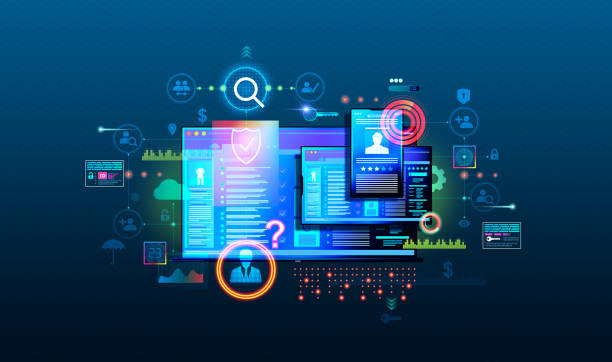OK, now back to the original subject. Steps 6 to 10 in my suggested top ten list.
- What steps should I take to protect my business from ransomware attacks? A very good question with a multi thread answer.
- Keep Software Updated. Regularly update your operating system, applications, and antivirus software to ensure you have the latest security patches.
- Use Strong Passwords. Use unique and complex passwords for all your accounts and consider using a password manager to keep track of them securely.
- Enable Two-Factor Authentication (2FA). Add an extra layer of security by enabling 2FA whenever possible, as it helps prevent unauthorized access to your accounts.
- Be Cautious with Email. Avoid opening attachments or clicking on links from unknown or suspicious senders. Be wary of phishing attempts.
- Backup Your Data. Regularly back up your important files and data to an external hard drive or a secure cloud service. This way, even if you fall victim to ransomware, you can restore your files without paying the ransom.
- Use Reliable Security Software. Install reputable antivirus and anti-malware software to help detect and block ransomware threats.
- Educate Yourself and Others. Stay informed about the latest ransomware threats and educate your family or colleagues about the risks and preventive measures.
- Secure Network Connections. Use a firewall and be cautious when connecting to public Wi-Fi networks.
- Limit User Privileges. Restrict user access privileges on your devices, granting administrative rights only when necessary.
- Monitor for Suspicious Activity. Regularly monitor your devices and network for any unusual or suspicious activity that might indicate a potential ransomware attack.
- What can I do to ensure that my data is backed up in case of a cyber-attack? This is straight forward and highlights a problem whereby many SMEs think that if their data is on a cloud service, they don’t need to back it up. You need a backup routine that separates your backed up data, from your data storage. What I mean by that, is that if an attacker, or a piece of malware, can jump from one system to another, then having a live connection to your back up defeats the object, but it’s surprising how many people do this. So, there are a number of methods. The first is the good old fashioned tape backup. Becoming less and less used nowadays but still very effective. Another is that several cloud providers also provide a backup solution that disconnects once the backup has been done and will allow you to go back to a ‘clean’ backup if the current one has been compromised. Check this out, but do back up your data, don’t be convinced that you don’t need to, you do.
- What cyber security measures should I put in place to protect my business from external threats? To protect against external cyber threats, you should consider implementing the following cybersecurity measures:
- Strong Passwords: Encourage employees to use complex passwords and enable multi-factor authentication wherever possible.
- Regular Updates: Keep all software, operating systems, and applications up to date to patch known vulnerabilities.
- Firewall: Set up and maintain a firewall to control incoming and outgoing network traffic.
- Antivirus Software: Install reputable antivirus software to detect and remove malware.
- Employee Training: Educate your staff about cybersecurity best practices and potential threats, such as phishing and social engineering.
- Data Encryption: Encrypt sensitive data to prevent unauthorized access if it gets intercepted.
- Access Control: Implement role-based access control to limit users’ access to only the data and systems they need.
- Regular Backups: Regularly backup your important data and keep the backups in a secure location.
- Network Monitoring: Use intrusion detection and prevention systems to monitor network activity for suspicious behaviour.
- Incident Response Plan: Develop a comprehensive incident response plan to handle cybersecurity incidents effectively.
- Vendor Security: Ensure third-party vendors and partners also have strong security measures in place, especially if they have access to your data.
- Physical Security: Protect physical access to servers and sensitive equipment.
- How can I stay up to date with the latest cyber security threats and best practices? There is a number of things you can do but a lot depends on how much time you have available to devote to this. Probably not much and you may wish to consider having an advisor on tap, and surprise, we provide such an advisor. But pointers that might want to consider include:
- Subscribe to reputable cyber security news sources and blogs, like this one!
- Attend cyber security webinars.
- Follow cyber security experts on social media.
- Sign up for security alerts: Many organizations and government agencies offer email alerts for the latest cyber threats.
- Participate in cyber security training. I can’t emphasise enough the value of cyber awareness training for your staff.
- Read official reports and advisories: Stay informed about security bulletins and advisories released by software vendors and security organizations.
- Practice good cyber hygiene: Implement strong passwords, use multi-factor authentication, keep your software up to date, and regularly backup your data.
- What steps should I take to ensure my business is compliant with relevant regulations and industry standards?
This is going to depend on several factors, such as the business you are in. Many organisations must adhere to a variety of standards within their area of business and of course, many use a variety of International Standards such as ISO9000 series. On top of this there are legal frameworks that you also must adhere to, amongst those are UK GDPR and financial services regulations. Not an exhaustive list. It can be a minefield.
It is somewhat surprising to me, that many SMEs that I visit don’t know what data is subject to these regulations and what isn’t, and where that data is actually stored, how it is processed and protected. They will argue that they do know most of this, at least at a high level, but that they outsource to their local IT provider. That won’t help you if a regulator comes after you. You can outsource your IT, but not your responsibility. Take advice, get guidance, there are some great protections and audit tools out there which don’t have to cost a fortune. Check them out.







Recent Comments